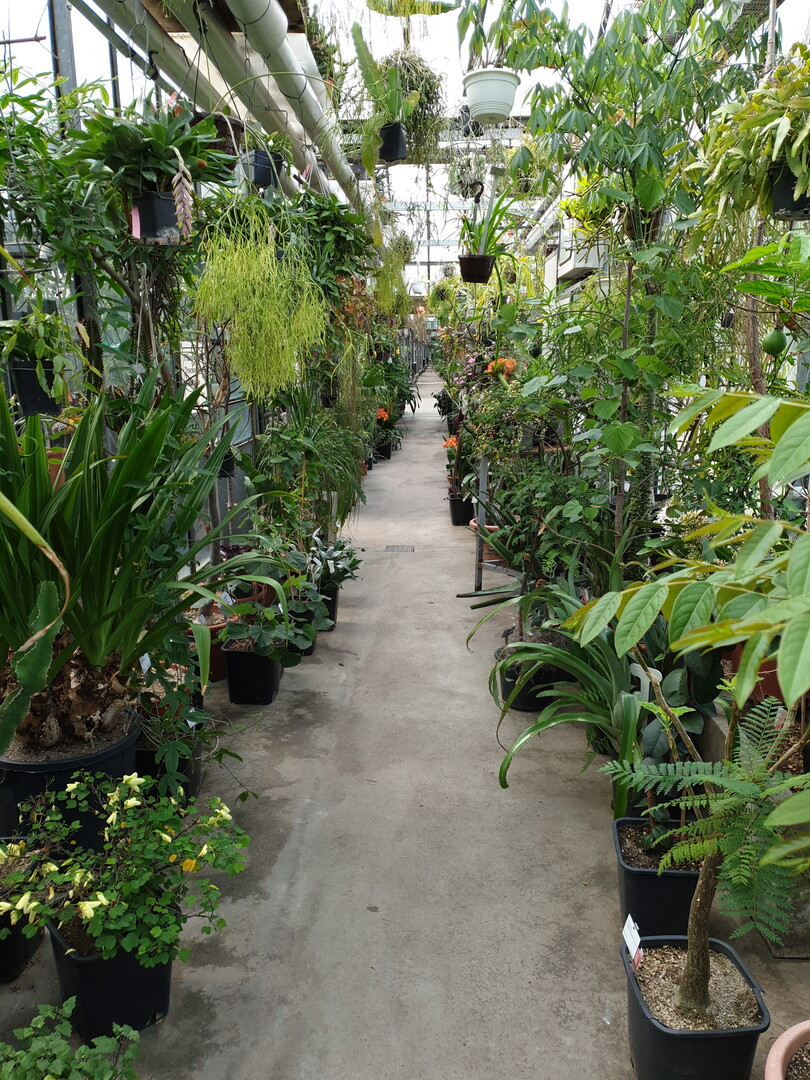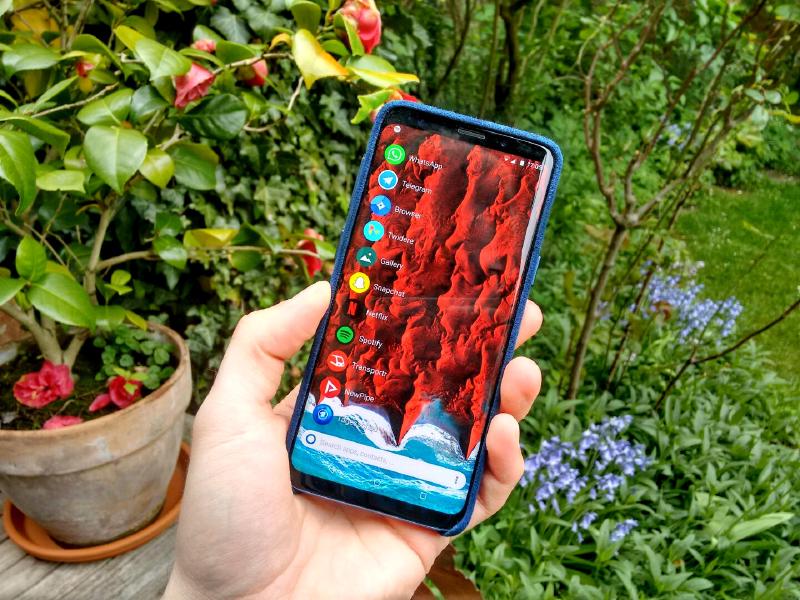My new phone: the Samsung Galaxy S9, codename
starltewith LineageOS and KISS Launcher
Introduction
It comes down to this: Is there anything that’s an absolute deal breaker and what are your must-haves?
For me it is absolutely crucial that LineageOS is available for my phone, which is a free and open-source phone operating system based on the Android Open Source Project. For most people, this is probably not what they want since you void your warranty installing it, but I enjoy it. It has no bulky apps you cannot remove and avoids the weirdness the phone manufacturers force upon you. You could use your phone entirely without closed-source Google apps, of which nobody really knows what they are doing. They could be used to spy on you. Or not. But because you can not look into their source code, you will never really know.
There are some other things, I would like. I really do not get, why so many phones do not have a headphone jack anymore. Another trend, I think is really annoying is phones with glass backs. It’s bad enough that one side easily breaks when you drop your phone, so its ridiculous to put glass on the other. But people really like wireless charging. I like the concept of charging with coils, but so far the efficiency and speed of charging lacks compared to a simple cable. I’d prefer a more sturdy phone with a metal back.
So to summarize, this was my wishlist for my ideal phone:
- LineageOS
- dual SIM
- not gigantic
- JerryRigEverything tested and found durable
- expandable or large storage
- headphone jack
This stuff would be nice, but is not required:
- small size
- waterproof
- fingerprint scanner
- good camera
- relatively cheap
- USB-C
- fast charging
- large battery
I actually do not need/want this:
- wireless charging
- multiple cameras on the back
- glass back
But my perfect phone does not exist.
Analysing some data
Fortunately, the LineageOS project provides some data that can easily be analysed to make a better choice.
I just read the yaml files with python, applied some filters and drew some plots.
The most eye-opening result has been this graph of approximate size of the screen compared to the area of the front side of the phone:

The Samsung Galaxy S9, codename starlte, immediately caught my attention.
It has a very large screen for its size.
I then looked into the details and realized, I liked what I saw: Headphone jack, waterproof, small with a very good, notch-less screen (another stupid trend). It basically ticked a lot of the right boxes for me, except for having a glass back and having a relatively small battery compared with the competition.
It is also praised by The Verge. But they also list some flaws – which are all addressed by LineageOS.
Actually buying the phone
While there are other nice phones designed to be cheap by less known manufacturers, starlte was actually the flagship phone by Samsung in the year 2018 and has since steadily gotten cheaper.
It now costs about half the price of when it was originally released.
So I compared online and waited for a good deal and then ordered it, just a few days later, it arrived.
Checking out the original software
I was actually quite surprised, about how well One UI, Samsungs current modified version of Android, suits the phone. It can be set up to showcase the very high contrast of the screen and has a bunch of nice gimmicks. I also liked the heart-rate sensor which I found to work quite well and the feature of One UI, that you can pull down on many screens such that you can reach everything using just one hand, blowing up the headers which are filled with pretty typography.
Unfortunately, there is a lot of stuff installed that can not be removed: lots of Google Apps, a full Microsoft Office, and several social networks like Facebook and LinkedIn, which I do not even use. And, of course, Bixby, the most annoying smart assistant with a dedicated button on the side of the phone, which can only be remapped if you create a Samsung account which I do not want.

Assimilating the new phone to my needs
After I checked out, that everything works on my phone out of the box, I wanted to really make starlte my own.
I think you only really own something if you have voided its warranty, so that’s what I did by installing another operating system.
After successfully backing up the original Android image, the install process was quite easy, but there was a step missing in these instructions: I had to download a firmware update which I was made aware of by an actually helpful error message. It is always a bit thrilling to not know if the phone still works after the installation, but, if you faithfully follow the instructions by LineageOS, it should work out.
This time, I decided to install the smallest Open GApps to have the most bare-bones version of the proprietary Google Play Services (aka Google Services Framework, GSF), which many apps rely on; they do not function without them.
I think it is crazy that so many developers use them, not knowing, what they actually do in the background.
Google of course can use them to track you and your position, as well as other behavioural patterns, without your knowledge.
I would really like it, if more people would write their apps without this dependency.
On my old phone, the Motorola Moto G 2014 / titan, I had no Google apps at all and therefore had to miss out on some apps.
Now on my new phone, starlte, I installed a few Google apps, but I am not signed in to Google, making it a bit harder for them to track me.
To get good, open-source Android apps with no dependencies on GSF, you might want to check out F-Droid, an alternative FOSS app store for Android.
Samsung Galaxy S9 with LineageOS
Now, with LineageOS, I’m very happy. I got rid of all the stuff I didn’t need, to get a clean, simple phone.
The Verge listed some flaws in their review, but these have all been improved upon by LineageOS:
- battery life has improved
- there are way fewer Gimmicks
- no more Bixby
- “Samsung has a poor history of updating its phones”,
but LineageOS does not.
I am certain that the next few versions of Android will be brought to
starlteby the awesome people creating LineageOS
Unfortunately, the heart-rate sensor is not supported, as well as the different apertures of the camera, since that would require drivers from Samsung, which are not publicly available; these are the only gimmicks I will miss.

Getting a phone case
I would not have thought that this would be this difficult. First I looked at some phone cases in a shop in the city and then realized that again ordering online is way cheaper. So I ordered the official Galaxy S9 Hyperknit Cover by Samsung and it fit the phone a little too well: The power button was constantly pressed, such that it tried to turn itself off all the time. This is unacceptable, so I returned it.
Now, I use the Galaxy S9 Alcantara Cover by Samsung and like it very much. It is soft, warm, and grippy. The buttons are also satisfyingly clicky.
Conclusion
I was probably overthinking the whole process, but I am really glad with the outcome.
I like my new phone very much, it has a great camera, great software due to LineageOS, looks nice, is just the right size for me, and has an amazing screen.
I hope that it will serve me well in the years to come, I used my last phone titan for almost four years, so the bar is set!
